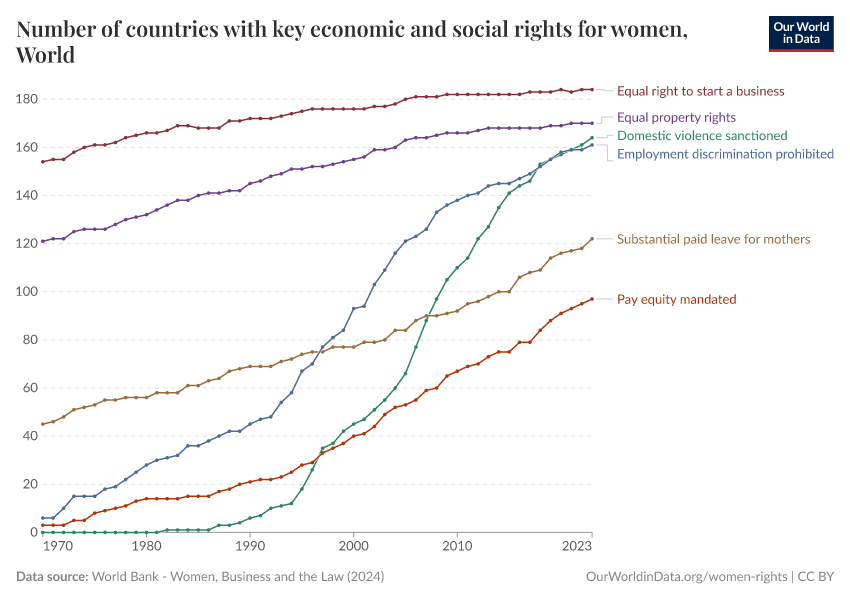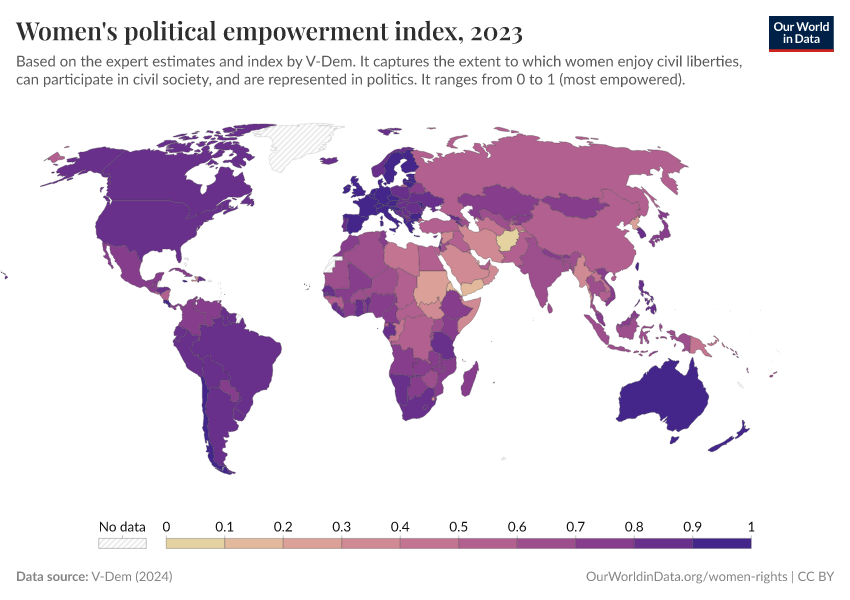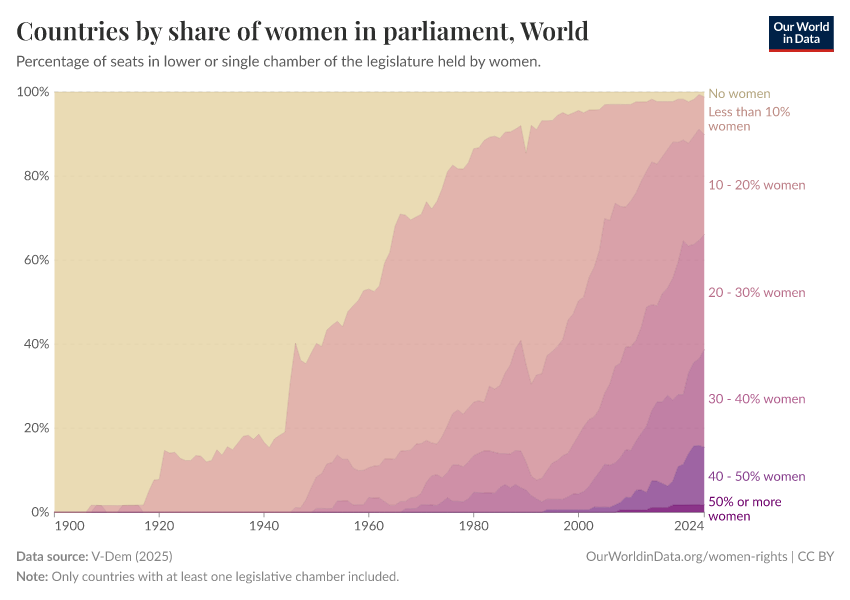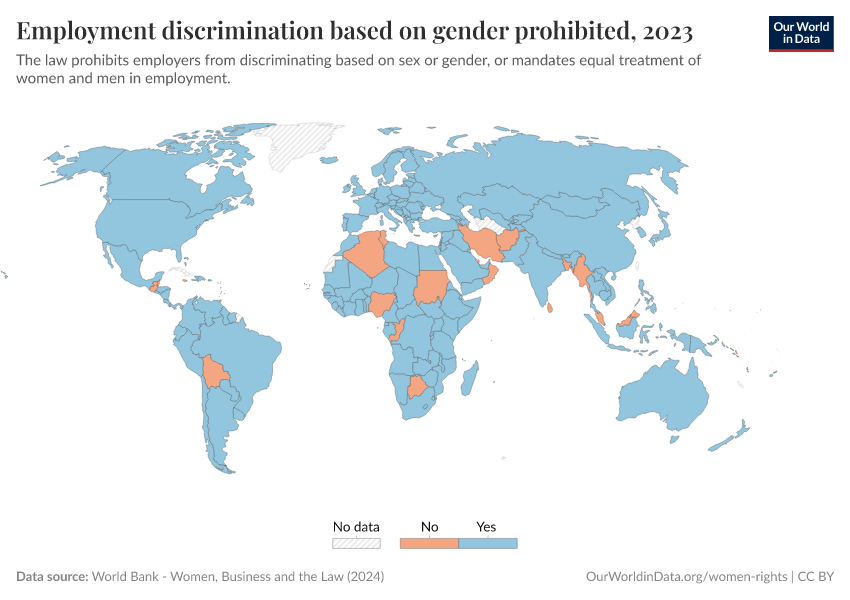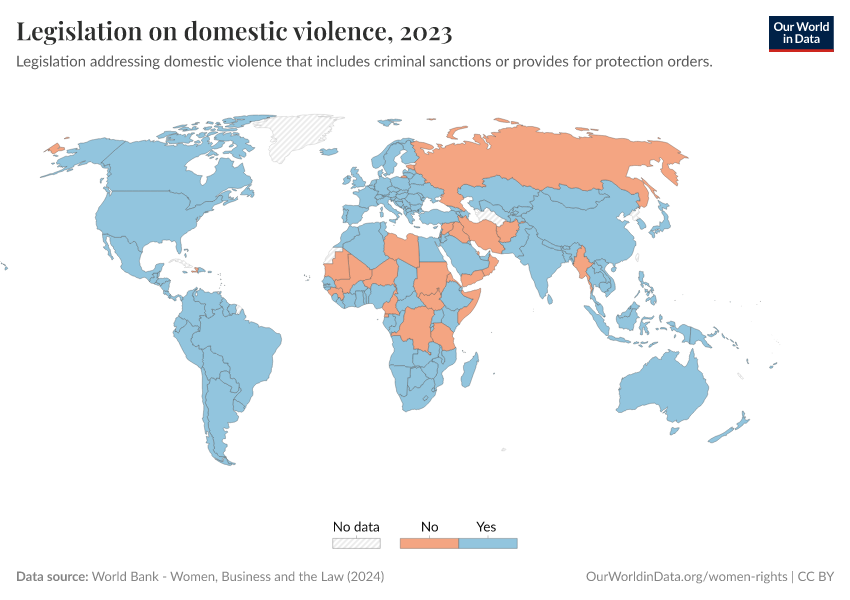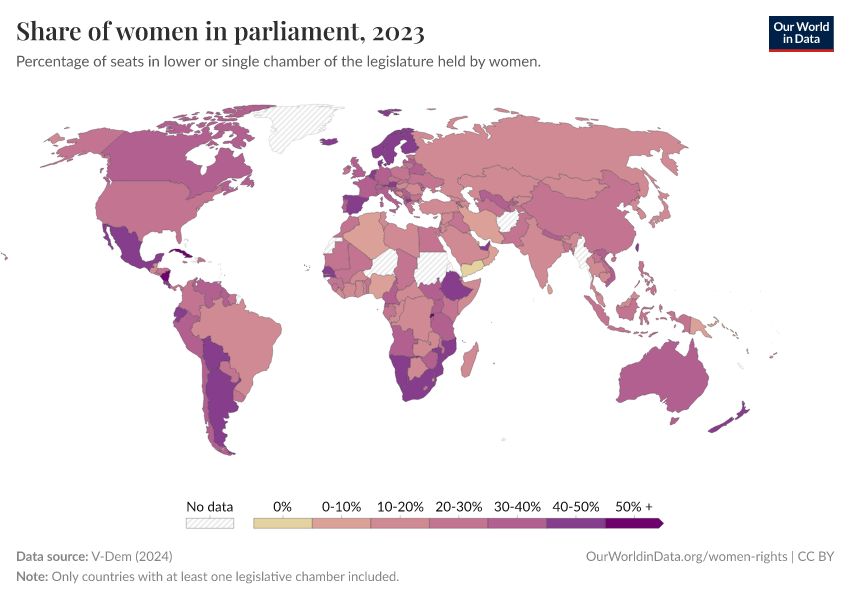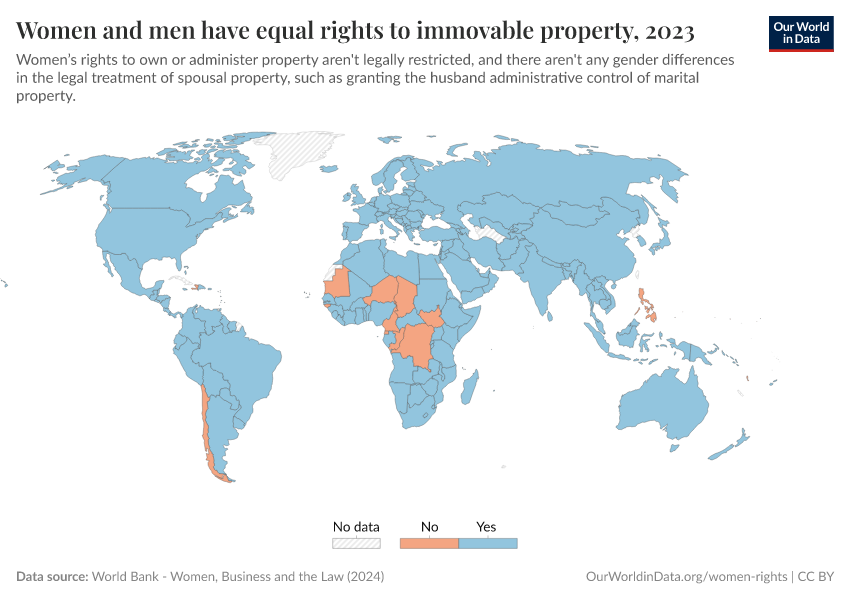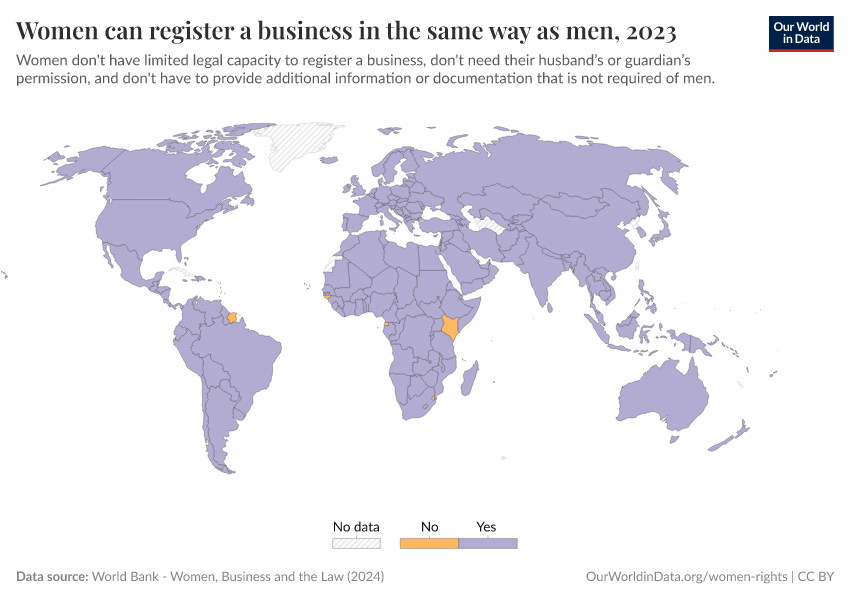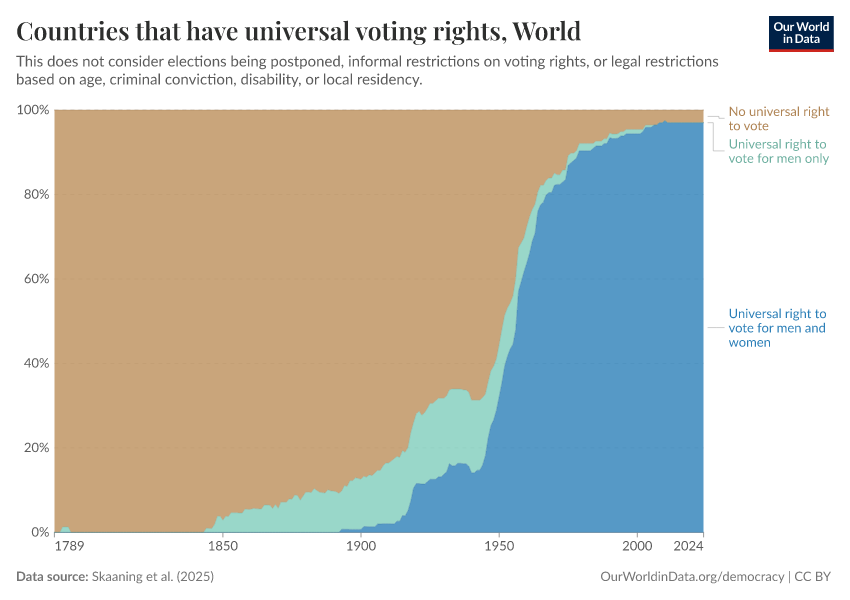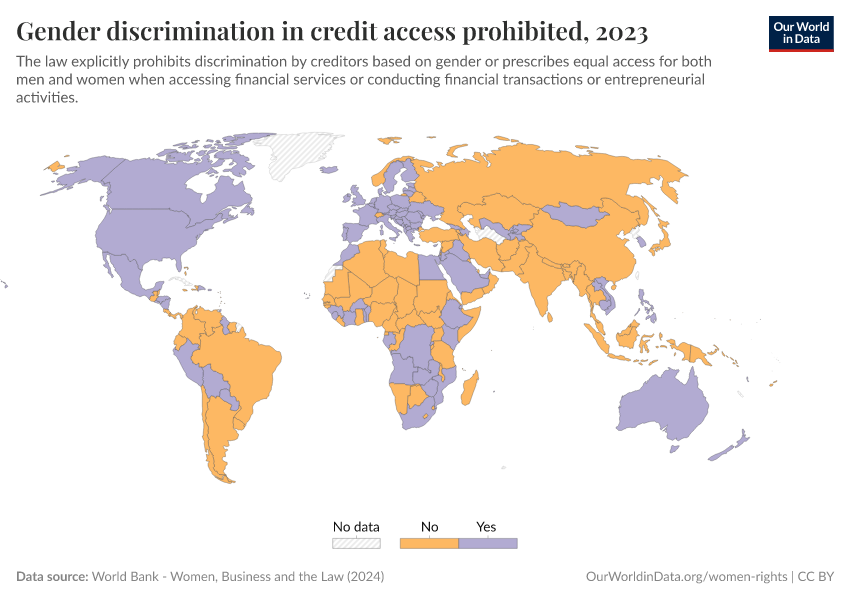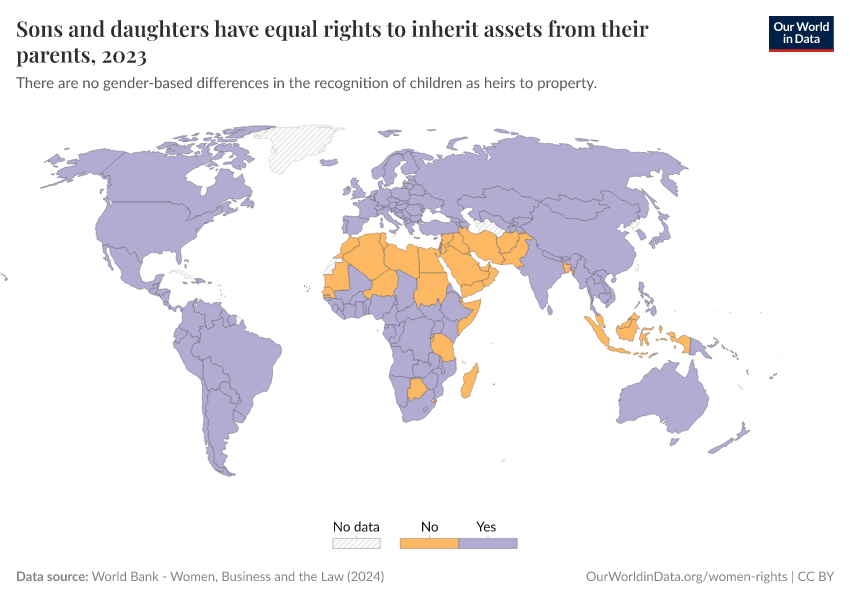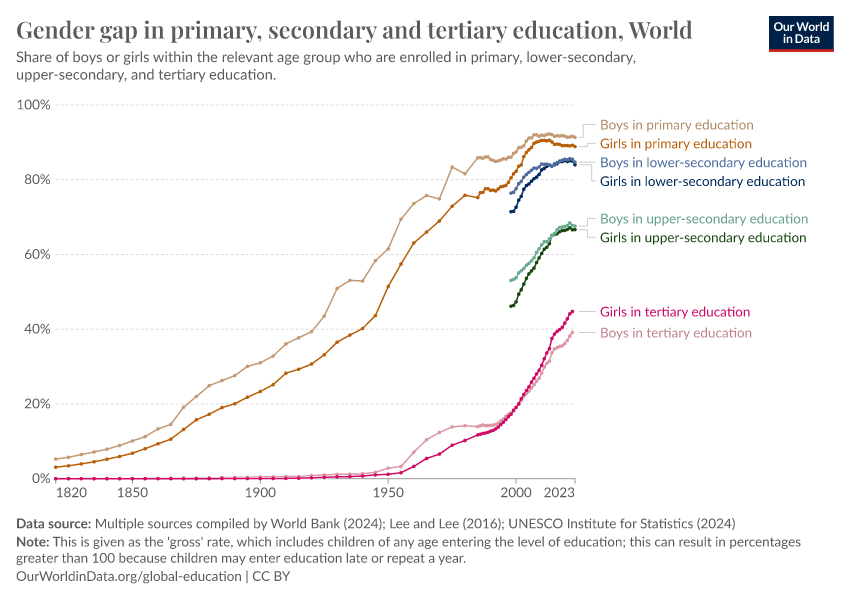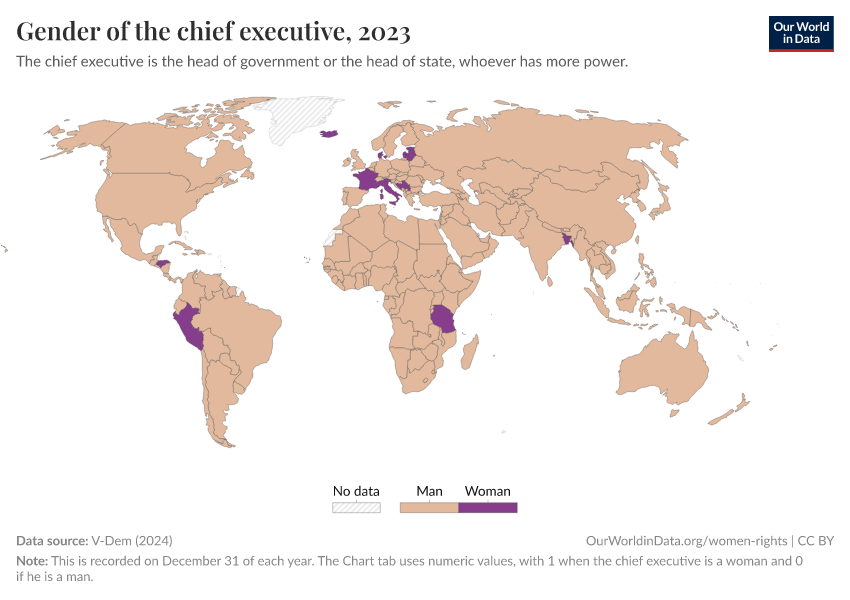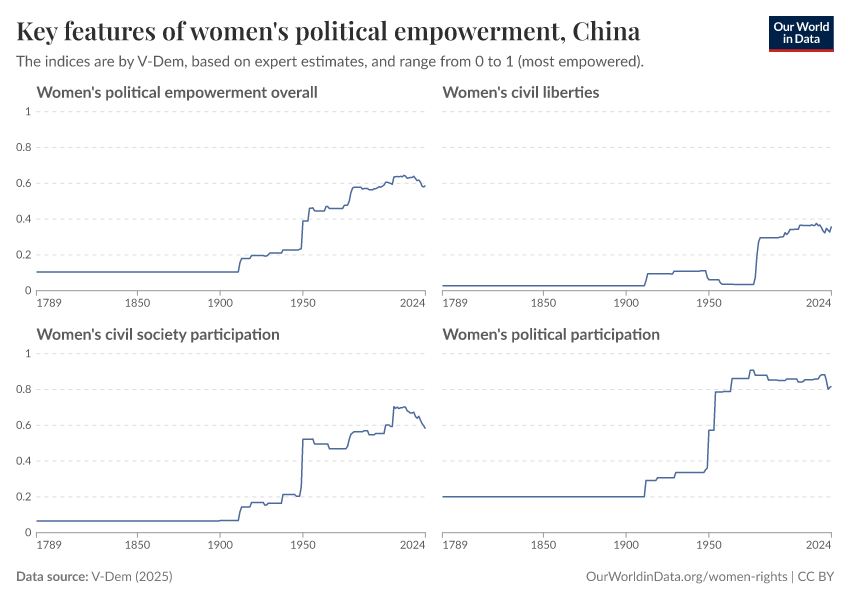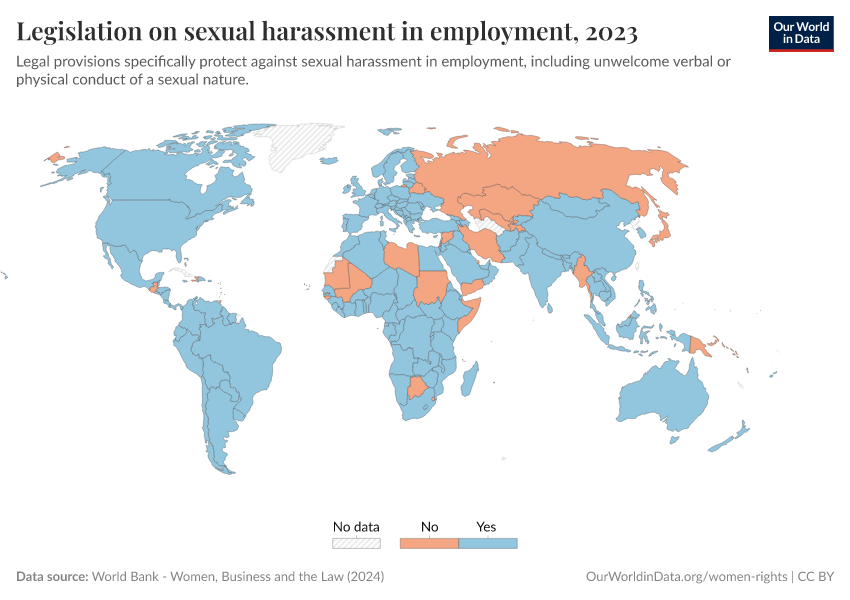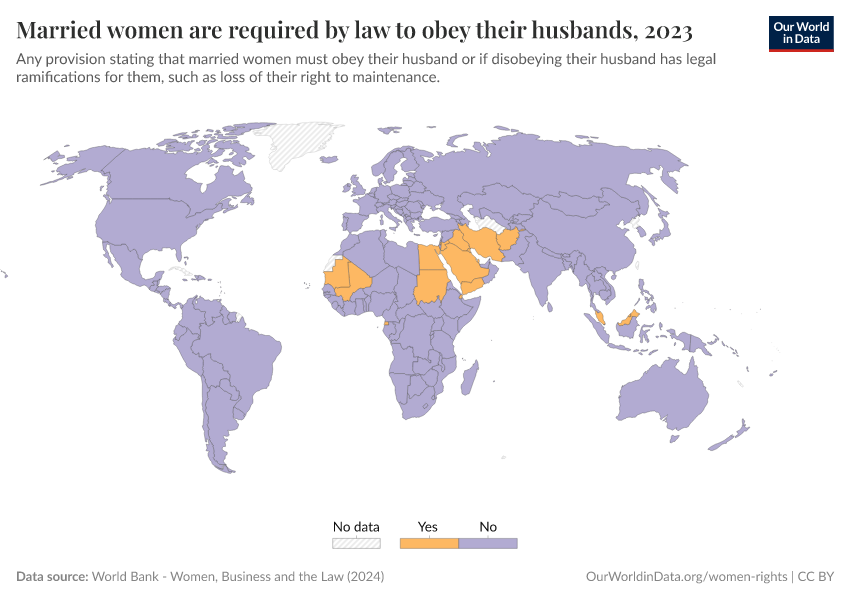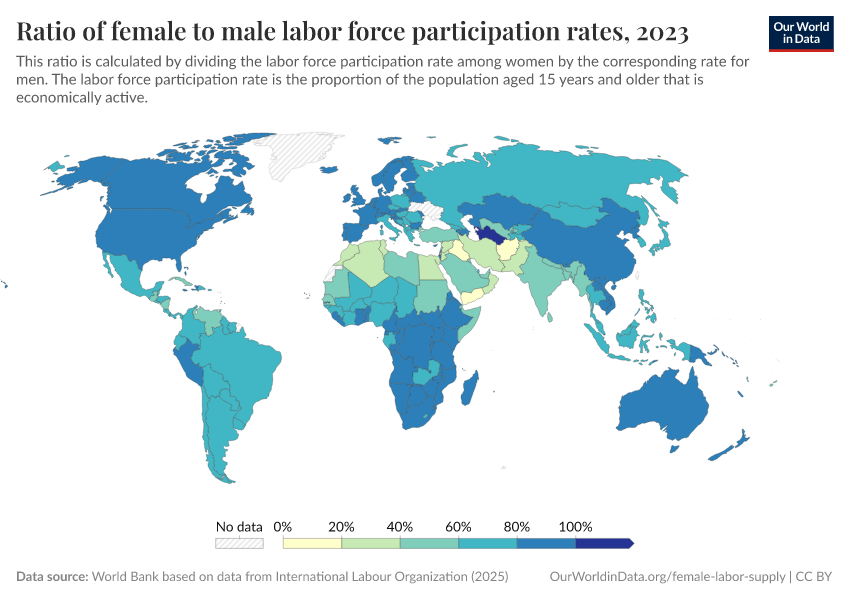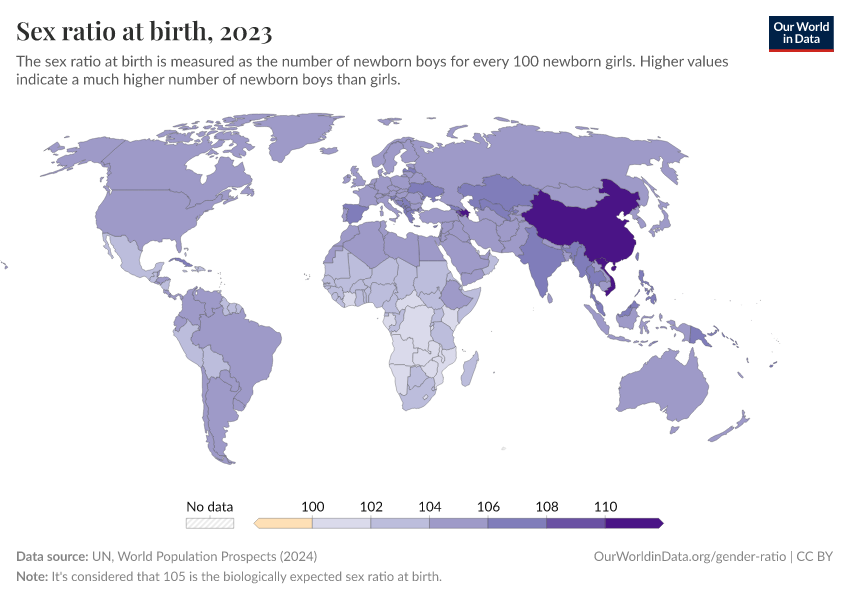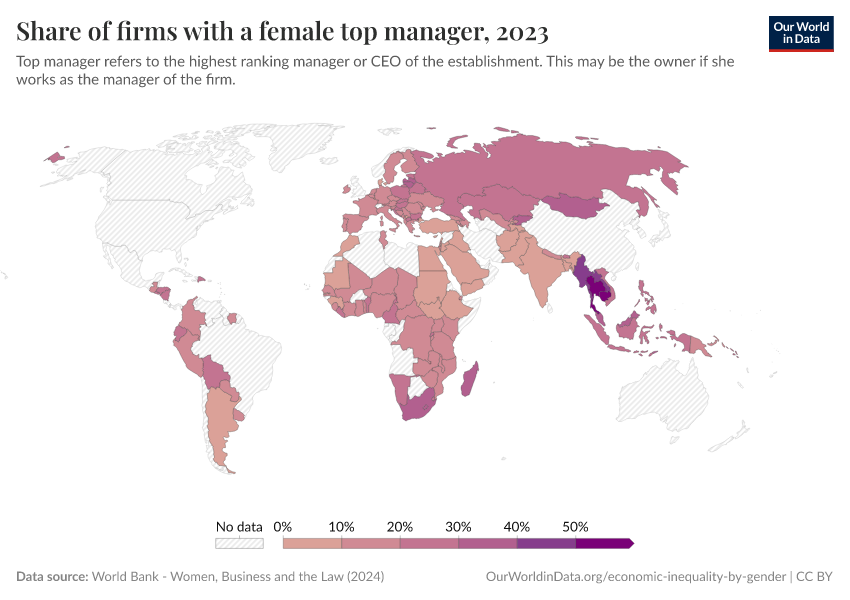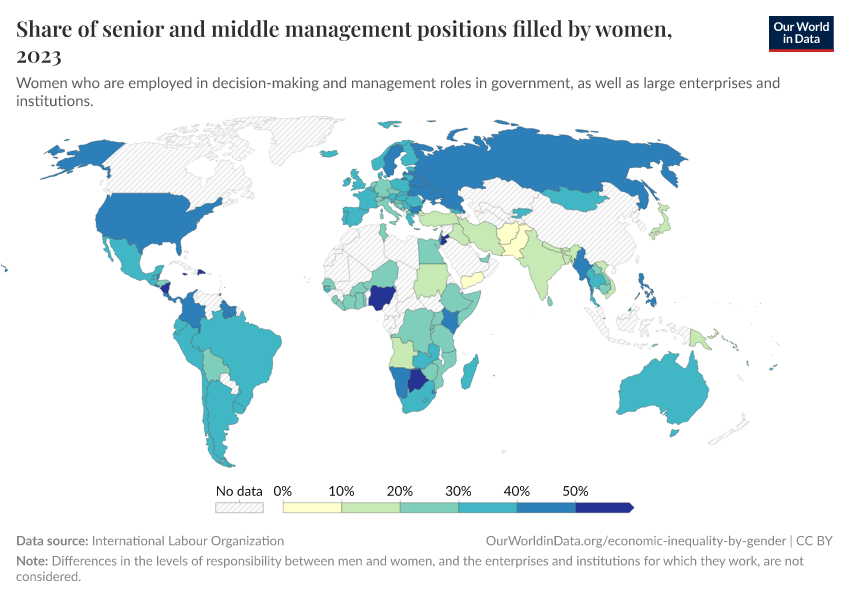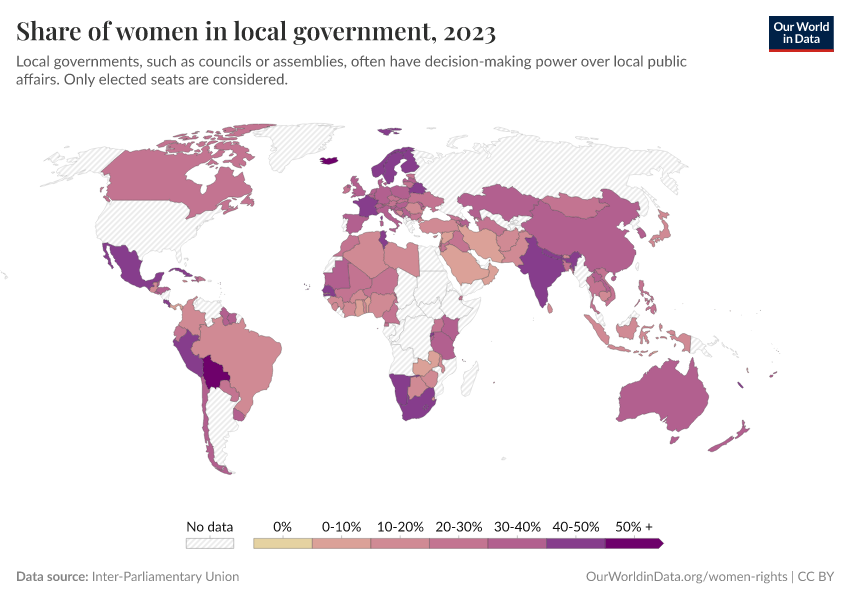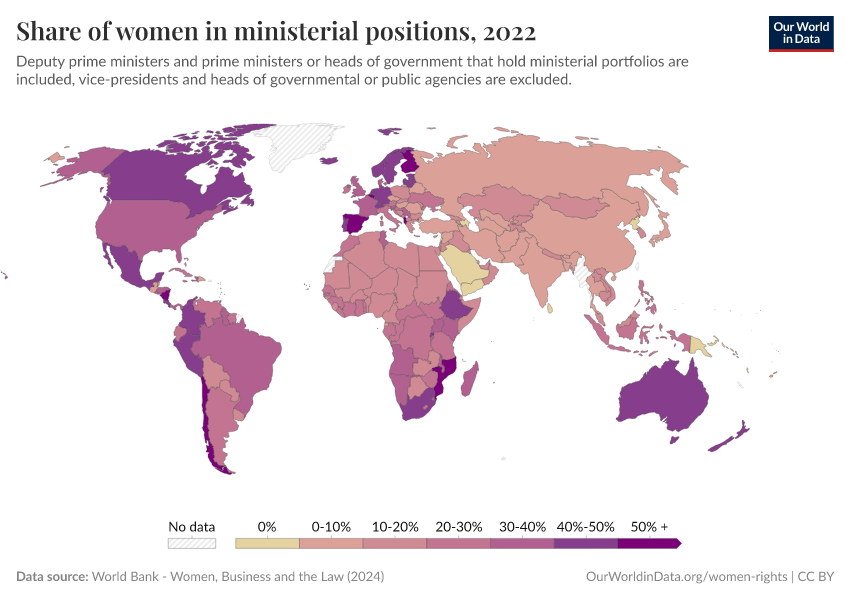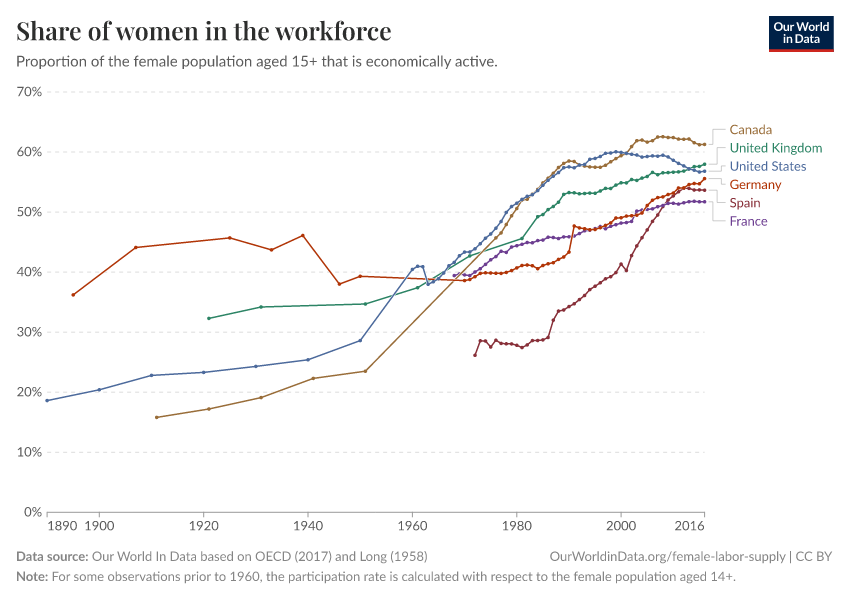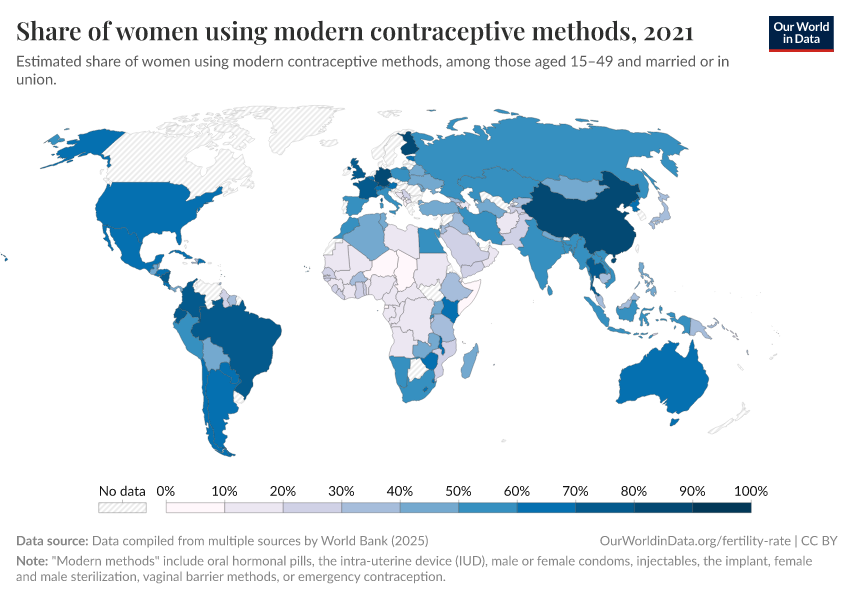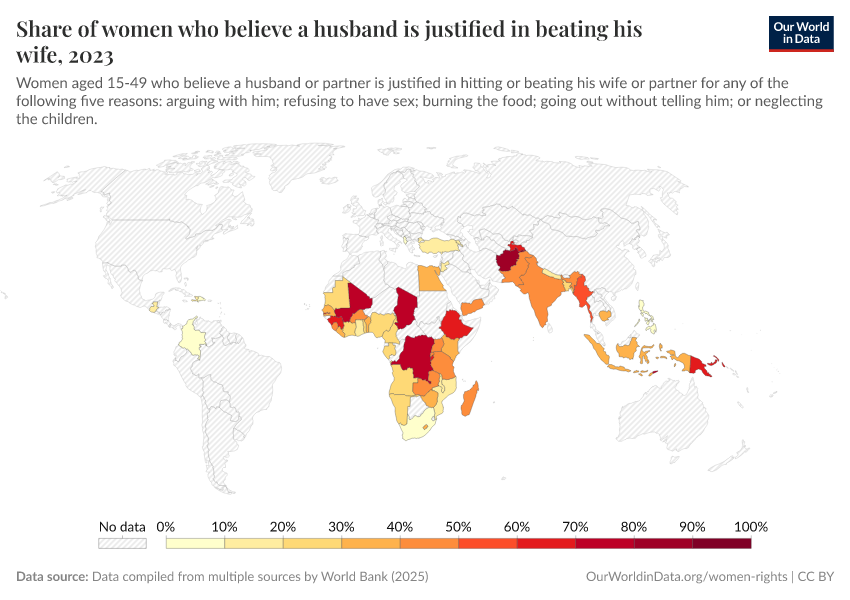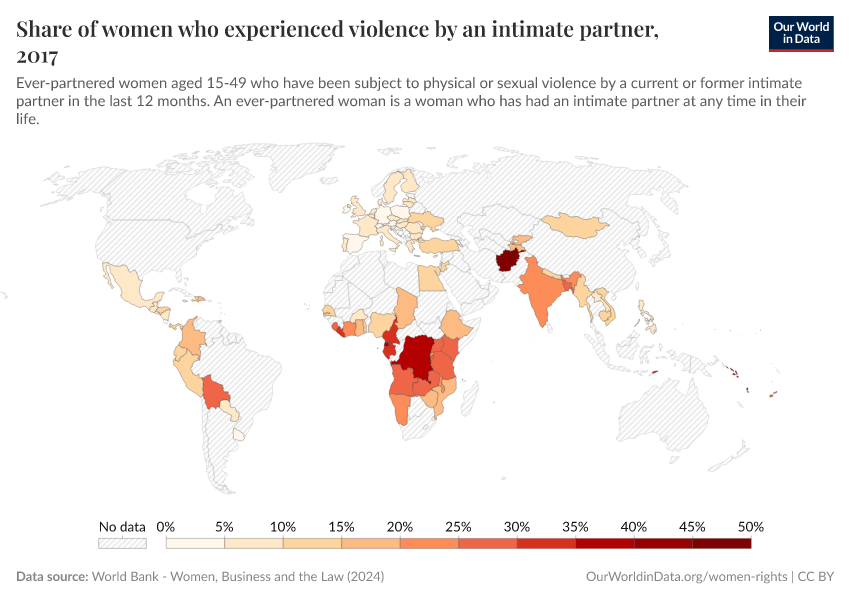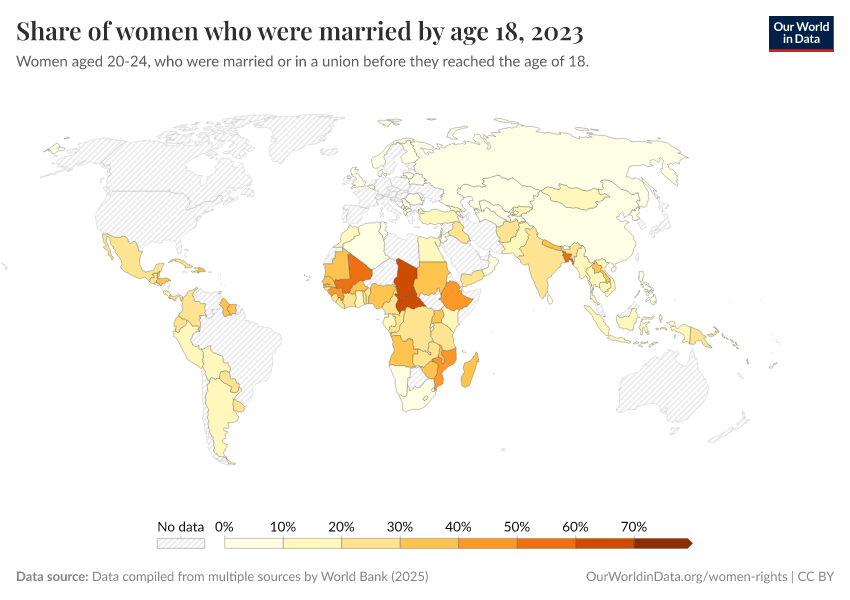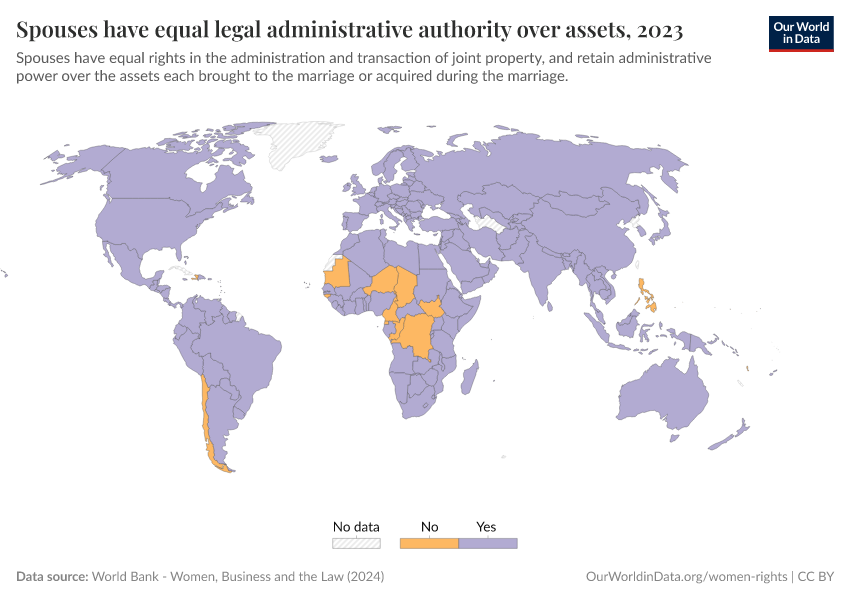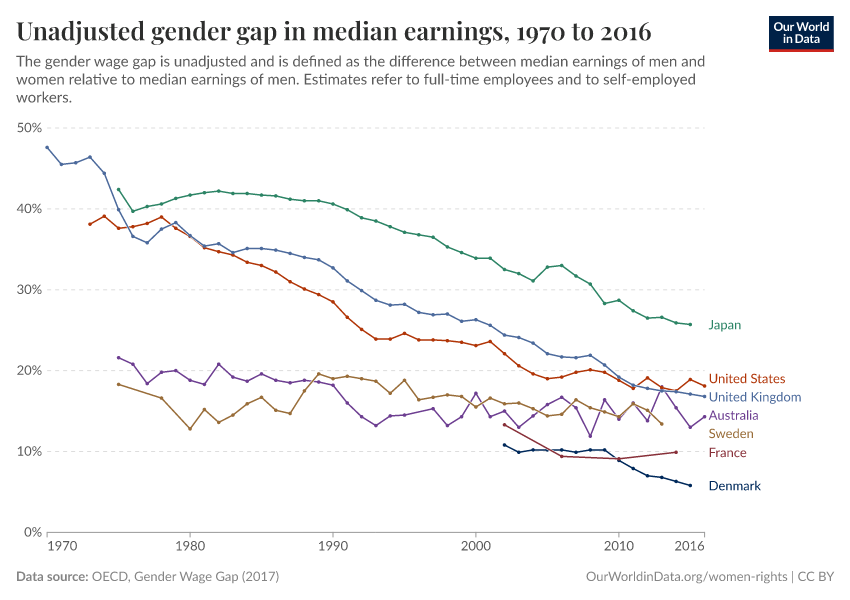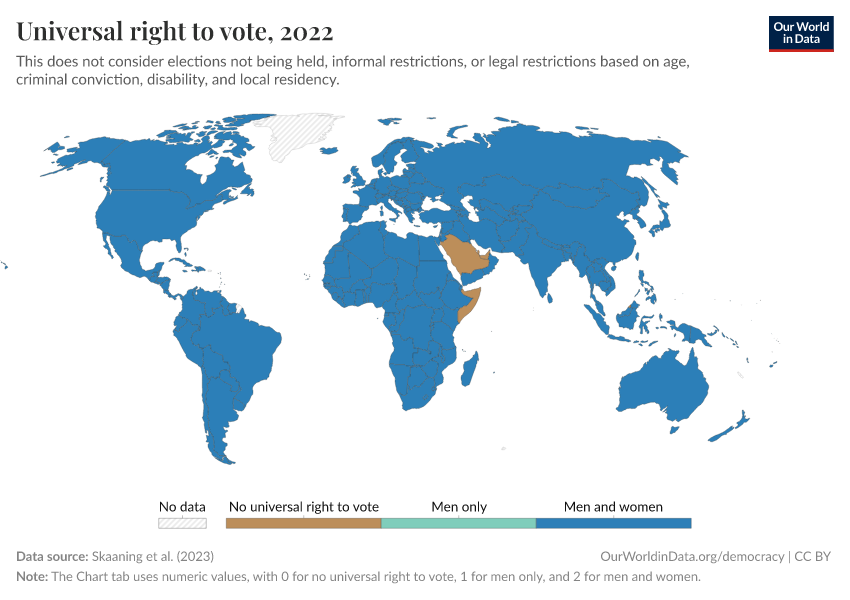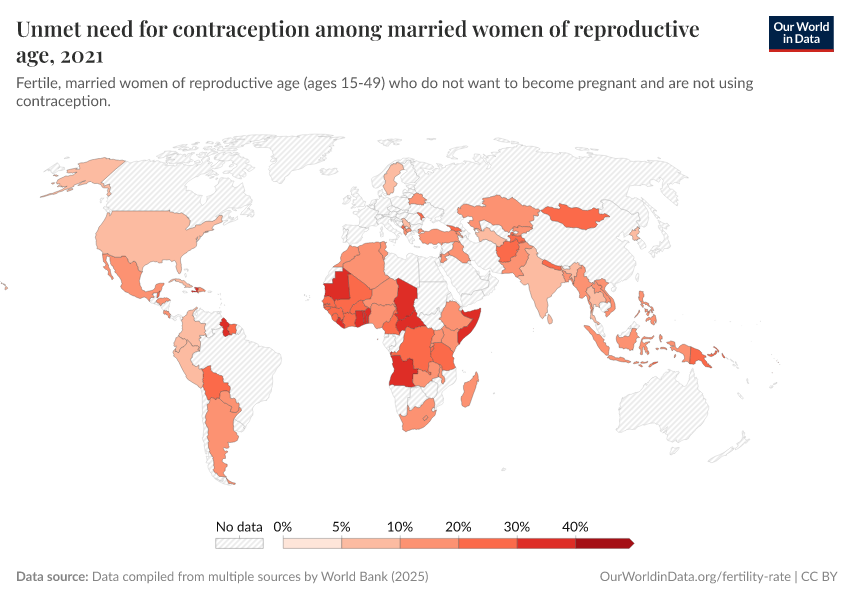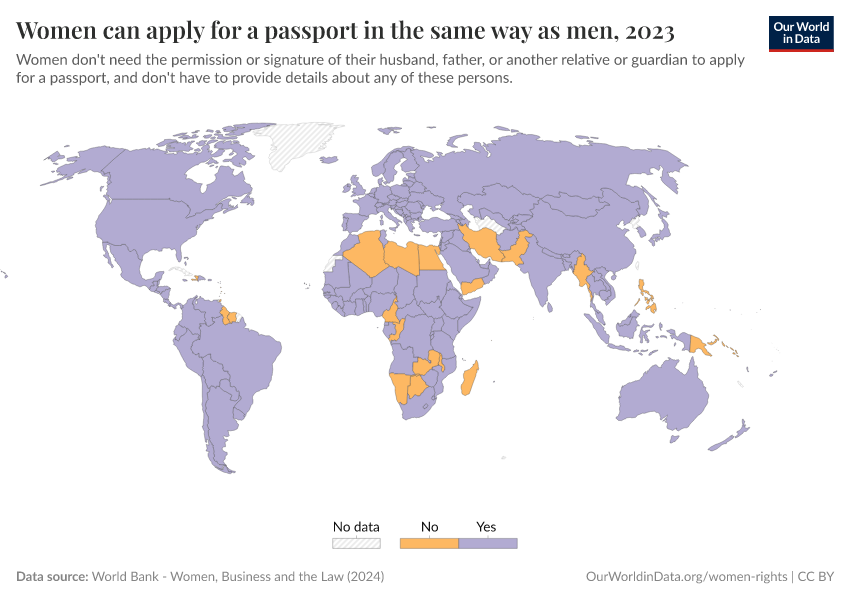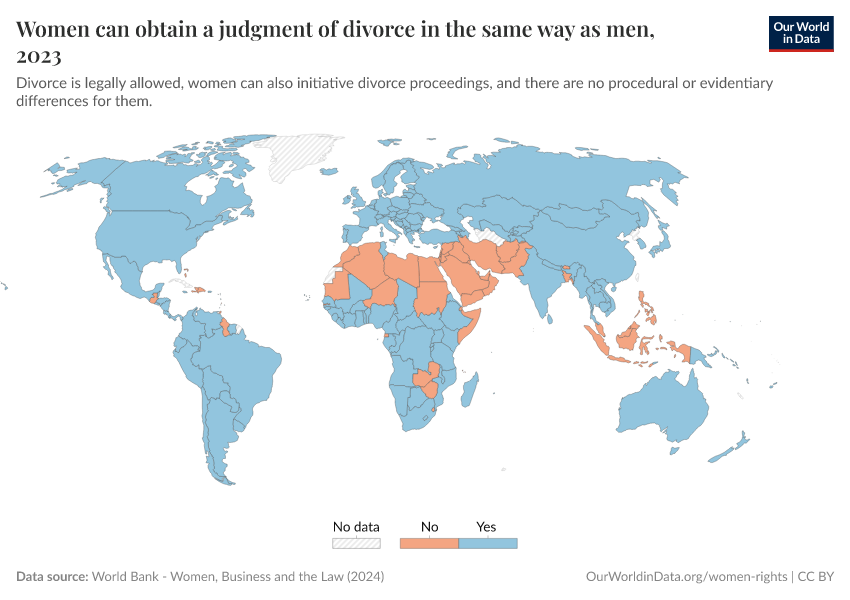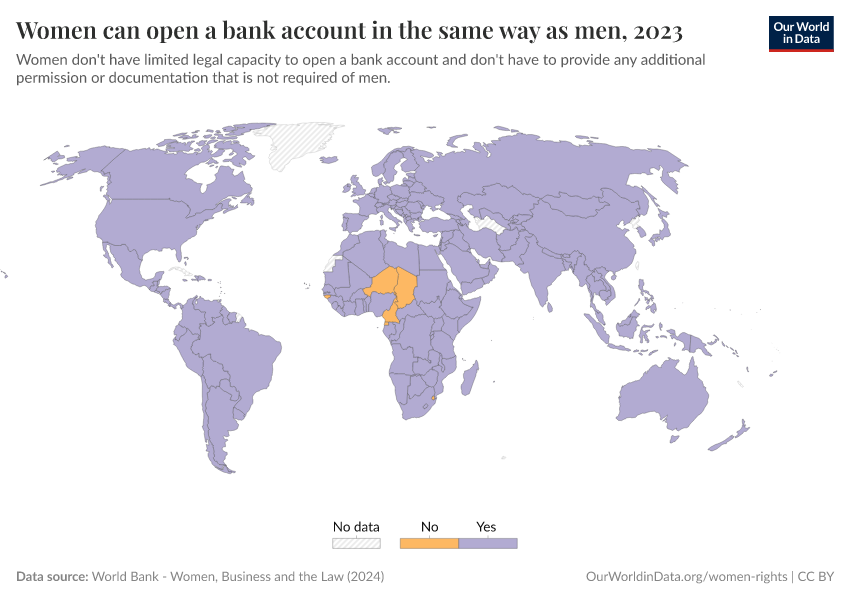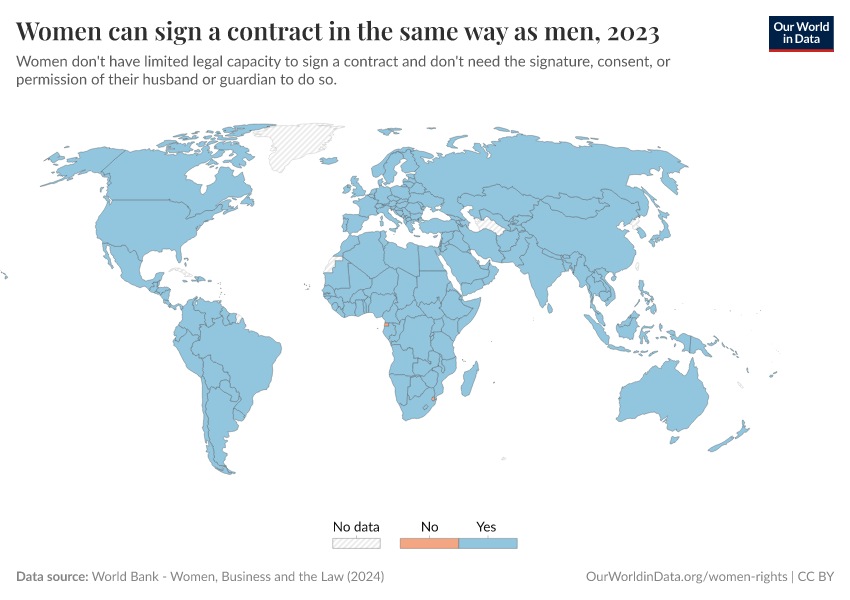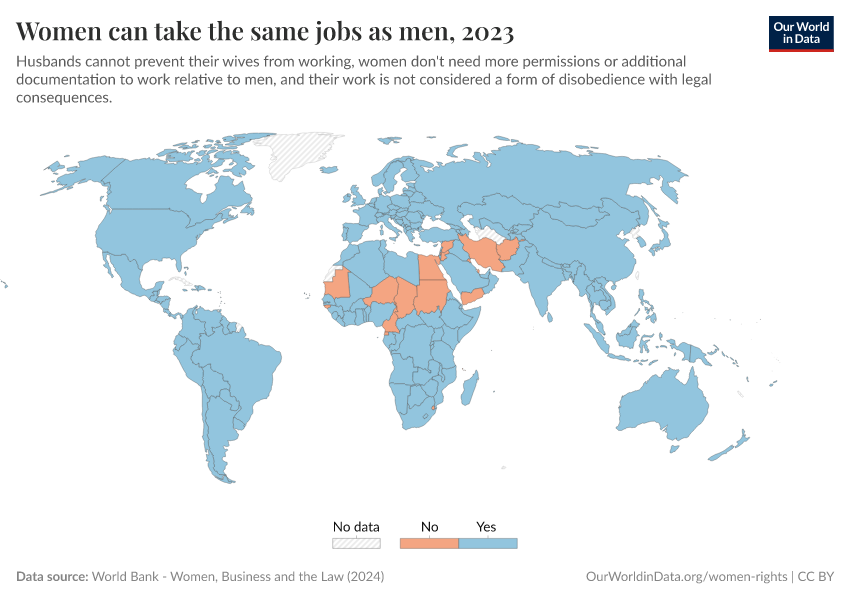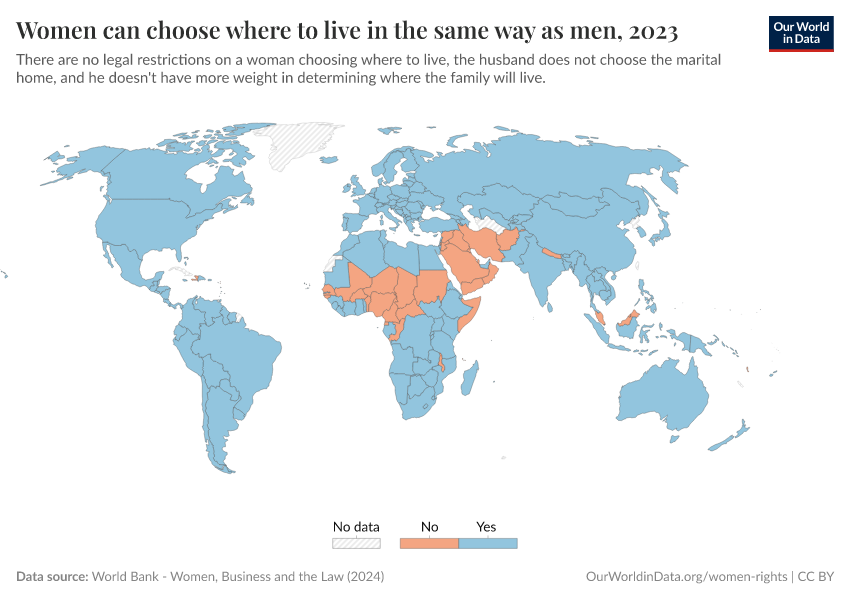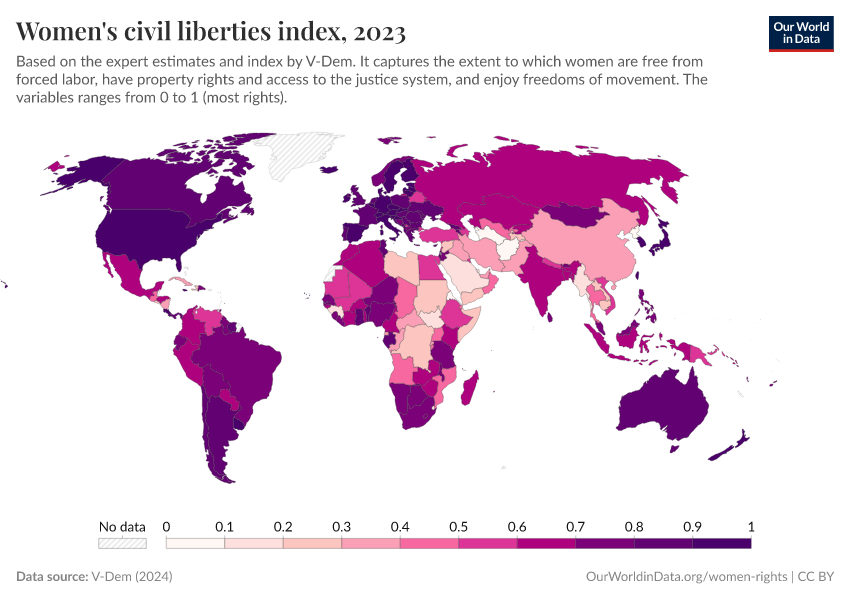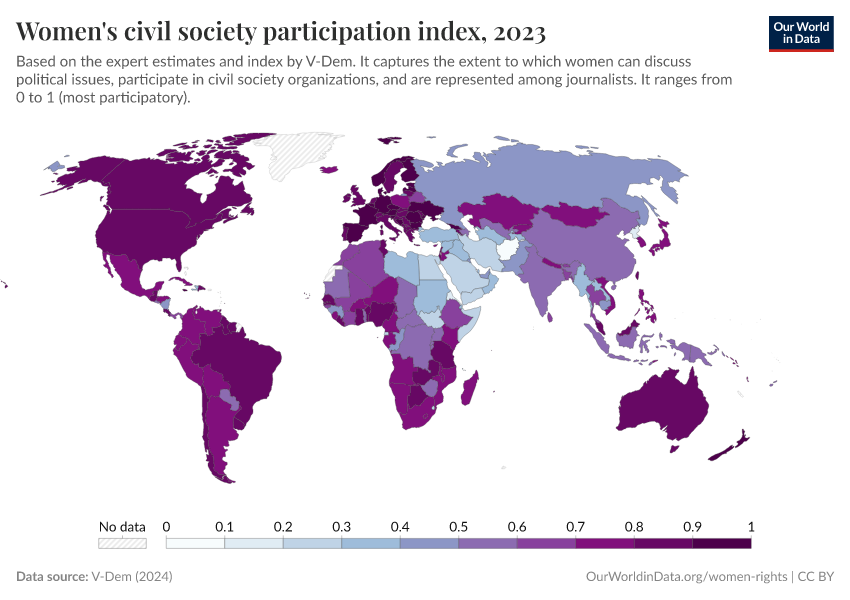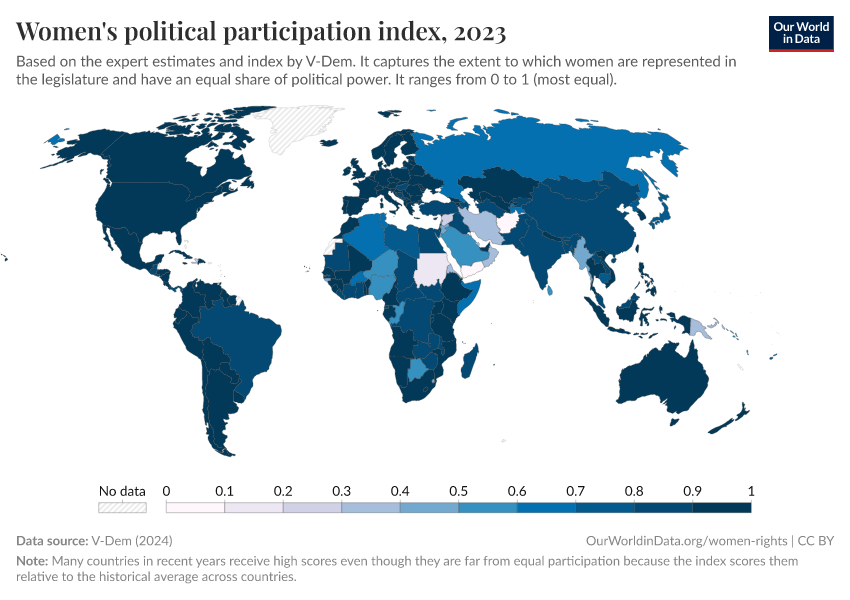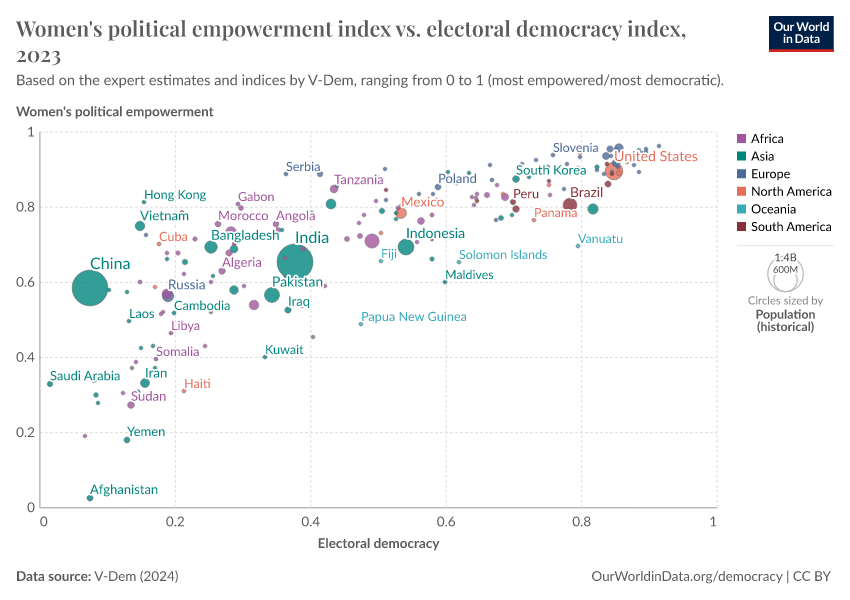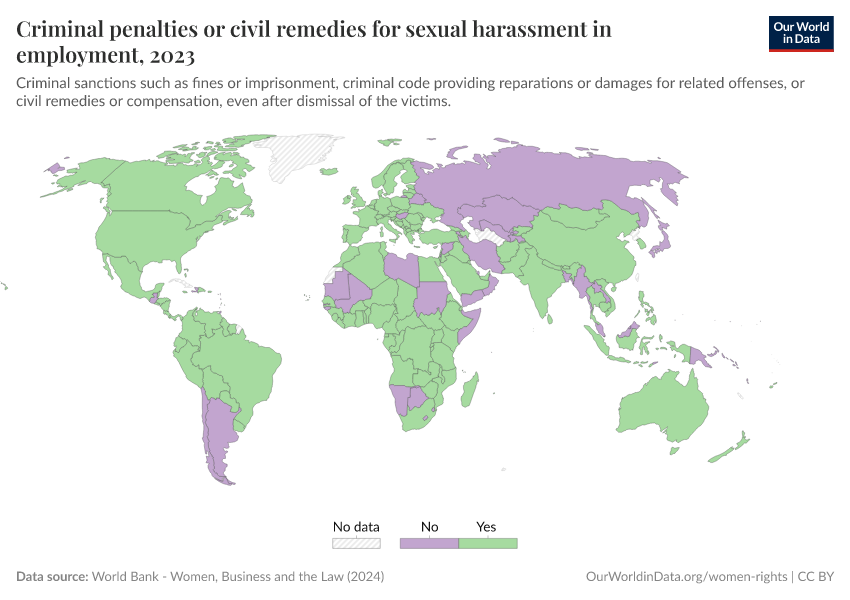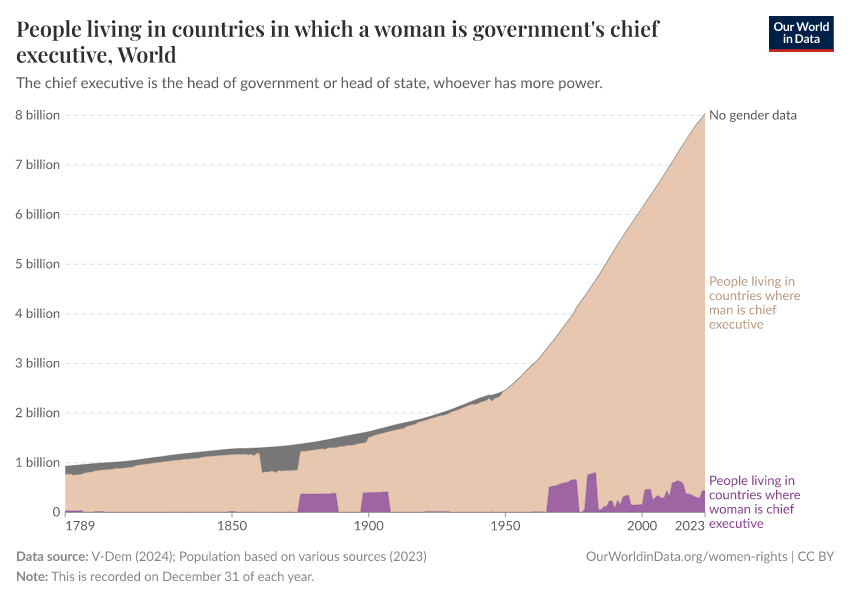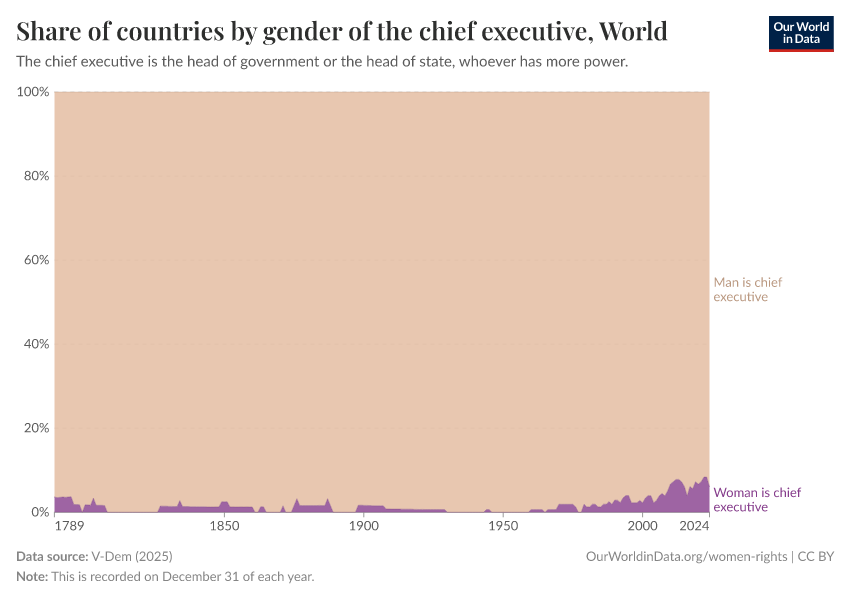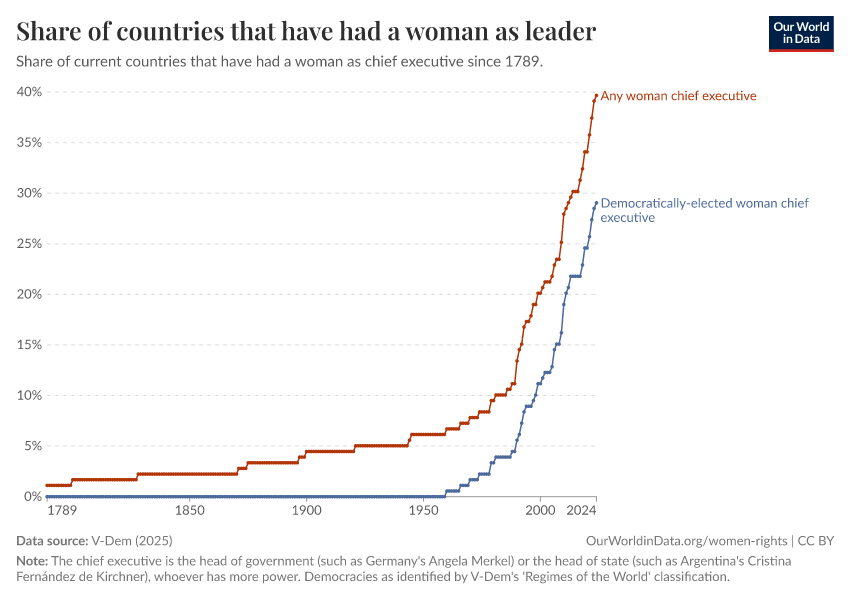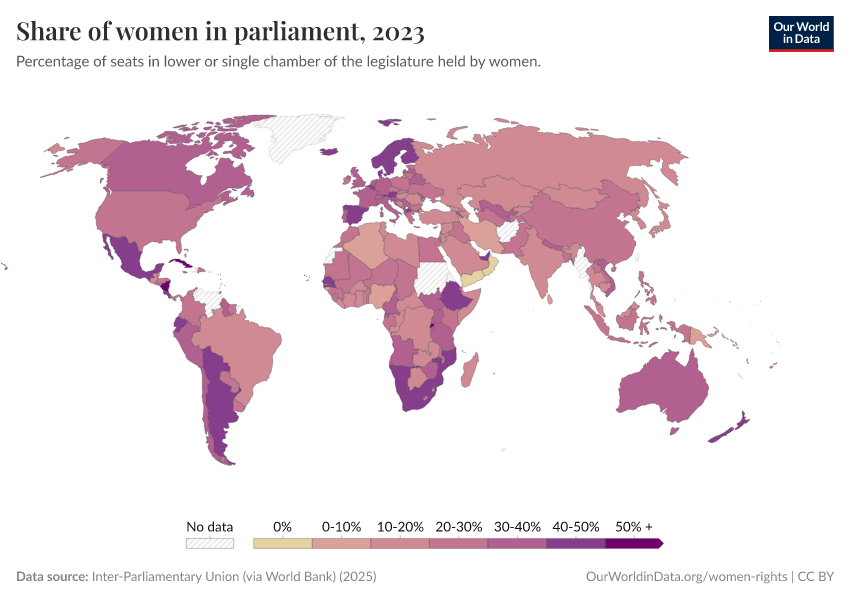Women’s Rights
Women’s rights are human rights that all women have. But in practice, these rights are often not protected to the same extent as the rights of men.
Among others, women’s rights include: physical integrity rights, such as being free from violence and making choices over their own body; social rights, such as going to school and participating in public life; economic rights, such as owning property, working a job of their choice, and being paid equally for it; and political rights, such as voting for and holding public office.
The protection of these rights allows women to live the lives they want and to thrive in them.
On this page, you can find data and visualizations on how the protection of women’s rights has changed over time, and how it differs across countries.
Research & Writing
March 08, 2024
Women have made major advances in politics — but the world is still far from equal
Women have gained the right to vote and sit in parliament almost everywhere. But they remain underrepresented, especially in the highest offices.
September 20, 2019
If we can make maternal deaths as rare as they are in the healthiest countries, we can save almost 300,000 mothers each year
Maternal mortality was much more common in the past. Today, it is much lower — but there are still large inequalities across the world.
Key Charts on Women's Rights
See all charts on this topicCite this work
Our articles and data visualizations rely on work from many different people and organizations. When citing this topic page, please also cite the underlying data sources. This topic page can be cited as:
Bastian Herre, Veronika Samborska, Pablo Arriagada, and Hannah Ritchie (2023) - “Women’s Rights” Published online at OurWorldinData.org. Retrieved from: 'https://ourworldindata.org/women-rights' [Online Resource]BibTeX citation
@article{owid-women-rights,
author = {Bastian Herre and Veronika Samborska and Pablo Arriagada and Hannah Ritchie},
title = {Women’s Rights},
journal = {Our World in Data},
year = {2023},
note = {https://ourworldindata.org/women-rights}
}Reuse this work freely
All visualizations, data, and code produced by Our World in Data are completely open access under the Creative Commons BY license. You have the permission to use, distribute, and reproduce these in any medium, provided the source and authors are credited.
The data produced by third parties and made available by Our World in Data is subject to the license terms from the original third-party authors. We will always indicate the original source of the data in our documentation, so you should always check the license of any such third-party data before use and redistribution.
All of our charts can be embedded in any site.
